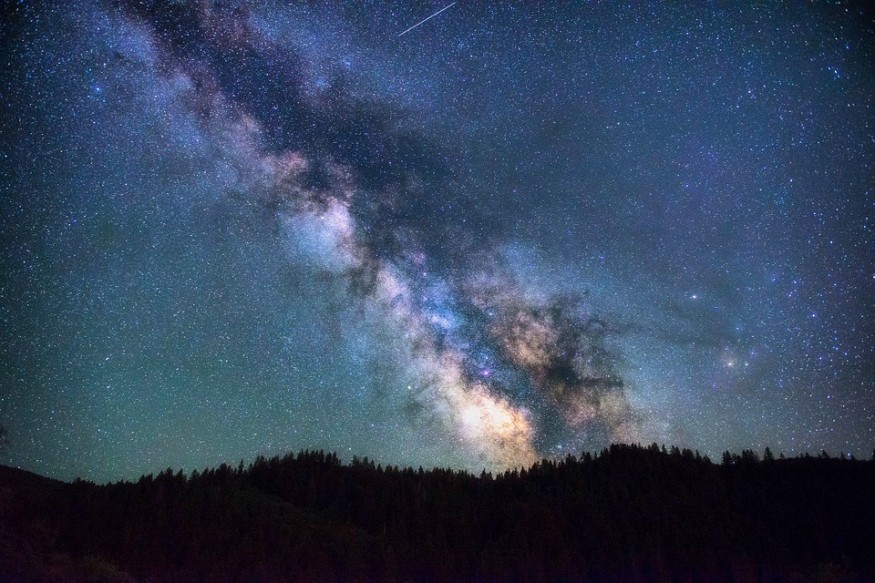August is among the finest months for astronomical phenomena throughout the night. This is primarily due to the Perseids, probably the year's greatest meteor shower. However, the Perseids aren't the only celestial event to watch this month. There's a lot more to see in August.
Here's a list of all the things you should see this month.

Saturn in Opposition - August 1
August begins peacefully, but there is one significant astronomical event to look forward to. Saturn will be in opposition on August 1, as reported by Science Times.
What exactly does this imply? Saturn will appear in the sky precisely opposite the sun - or that the Earth will be perfectly aligned with the sun on one side and Saturn on the other. This implies that from our vantage point on January 1, Saturn will be vividly lit in the night sky by the sun shining on the Earth's daylight side. (It's a fantastic night for seeing Saturn!)
Comet C/2021 O1 Nishimura - August 5
Sky and Telescope said Japanese astronomers found Comet C/2021 O1 (Nishimura) on July 21 by just a digital camera.
It will be at its near approach to Earth on August 5, at a distance of 158 million miles, Unistellar said. This comet can be seen in morning twilight, so if you want to capture C/2021 O1 Nishimura, this is one of the final days you'll have.
Moon & Venus Conjunction - August 10
The astronomical activities in this month's night sky begin on August 10, following a calm first week. The Moon and Venus will have conjunction that evening, Astronomy.com said.
Moon and Venus will pass within 4°17′ of one another on the night of August 10. This is too far apart to see with a telescope or binoculars, but don't let that stop you from looking. The Moon will be just 11 percent lit, and Venus will be brilliant, making it a perfect night to see them both.
Perseid Meteor Shower - August 12
Perseid meteor shower will peak in the early morning hours of August 12. You may expect to witness up to 100 to 150 meteors per hour at its peak, as Science Times reported. This, along with the fact that the northern hemisphere is experiencing mild weather, makes it the year's famous meteor shower.
Look for the Perseids to radiate from the northeastern sky to see them. Unlike last year, when a nearly full moon obstructed viewing opportunities, this year's Moon will be only 27% lit, resulting in far less light pollution.
Asteroid 349 Dembowska at Opposition - August 12
Three asteroids are visible this month. The first of which is asteroid 349 Dembowska on August 12, In The Sky said.
This big asteroid with a diameter of 140 kilometers was found in 1892. 349 Dembowska is also quite brilliant, coming in next to Vesta for an asteroid of its size in terms of albedo (brightness score).
The planet 349 Dembowska can be seen in the constellation Piscis Austrinus, and a 25% lit moon won't prevent you from spotting it with a telescope or binoculars.
Peak of Kappa Cygnid Meteor Shower - August 18
On the night of August 18, the next meteor shower of the month will occur. International Meteor Organization said stargazers should expect for the Kappa Cygnids meteor shower to peak on that evening. This meteor shower may not be as spectacular as the Perseids. Still, the Moon will be just 1% lit - almost new - and perfect for a night of astronomy and meteor spotting, even though the shooting stars will be few and far between.
Look toward the constellations of Draco near Cygnus to see Kappa Cygnid meteors. Kappa Cygnid meteors will appear to emanate from this region of the sky on the 18th, high above the northeastern horizon.
Asteroid 43 Ariadne at Opposition - August 19
Asteroid 43 Ariadne is named after the Greek heroine Ariadne, Mark Andrew Holmes said. The said heroine, according to Greek Legends And Myths, helped Theseus in escaping the Minotaur, married the deity Dionysus, and is linked to mazes and labyrinths.
Asteroid 43 Ariadne will be in opposition and highly lighted on the night of August 19. Ariadne is the second-largest asteroid in the Flora asteroid family, and it will be visible in the Aquarius constellation. Unfortunately, a brightly lit moon (93 percent) may obstruct viewing opportunities.
RELATED ARTICLE : Astronomical Events August 2021: What to Watch Out Next Month
Check out more news and information on Space in Science Times.












